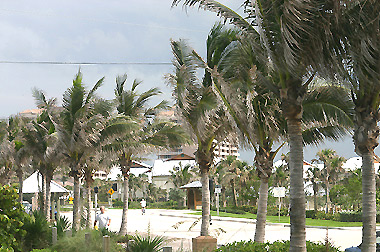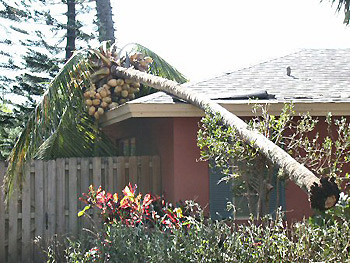Home > Pruning shade trees > Restoration pruning > Palms > Coconut palm
Coconut palms
Coconut palms were injured by direct exposure to salty air along the coast. Those more than a quarter mile or so back from the coast did not show as much salt damage as those that received direct exposure close to the beach. Sometimes all fronds turned brown but the petiole and midrib of the frond usually remained green.
Since the green midrib and petiole is the only green tissue remaining on the plant, the fronds must be left on the tree in order for the palm to recover. Removing salt injured fronds will remove most of the photosynthetically active tissue and could further stress the palm. (See: impact of over-pruning on storm damage)
Salt injury along the beach |
Close-up of salt injury in coconut palm |
Coconut palms with a full fruit load are top heavy which makes them more susceptible to wind blow-down. Remove fruit at the beginning of the hurricane season as a precautionary measure. |
Severely damaged coconut palms may not recover. Leave ALL fronds that have any green on them at all so they can carry on photosynthesis. This will help the palm build back energy reserves for growth. |





